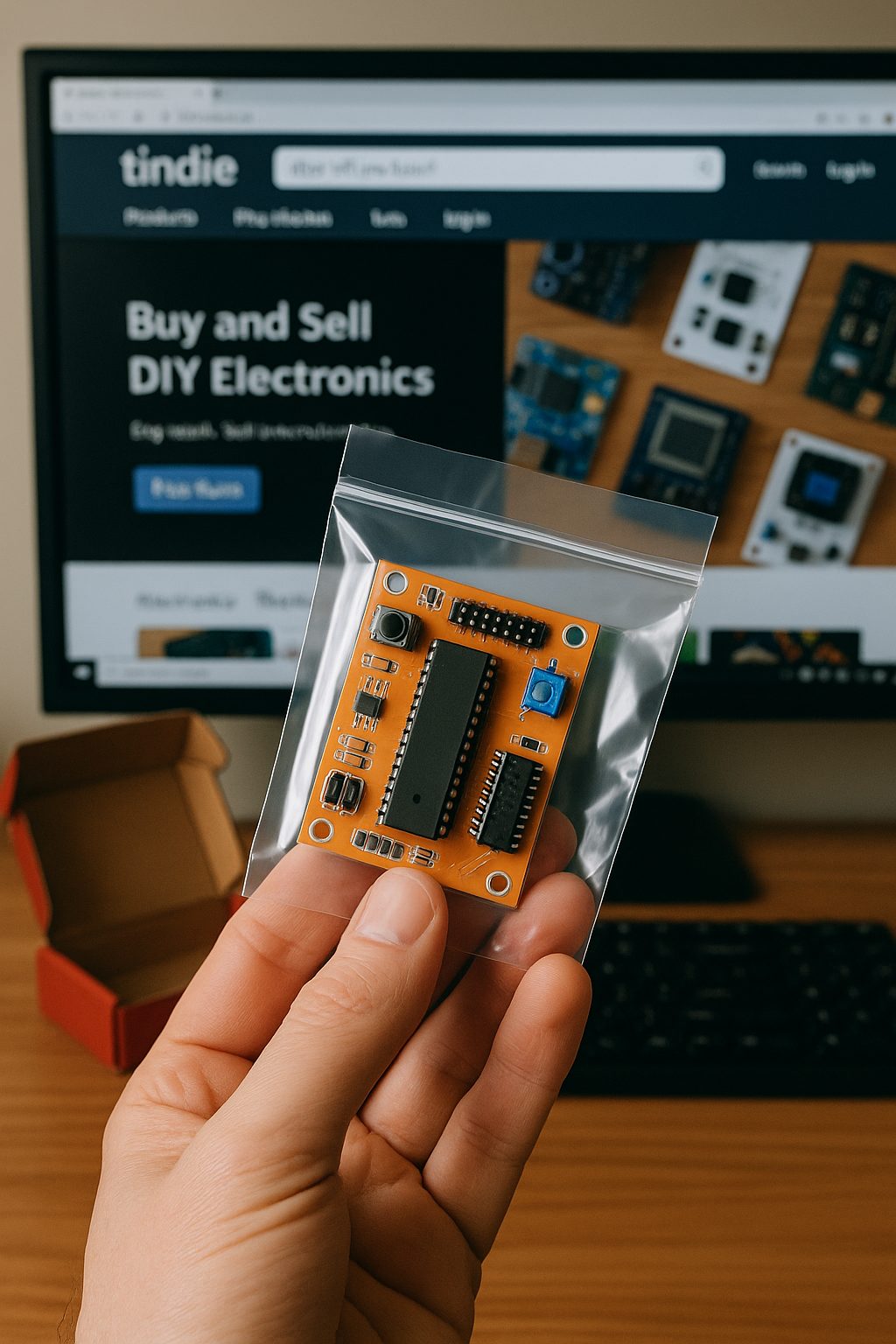The Raspberry Pi Zero 2-based handheld terminal that’s raising both eyebrows and $300,000+
When the Interrupt device first appeared on Kickstarter in early May 2025, it immediately captured the attention of the hardware hacking community. Promising to pack a full suite of cybersecurity tools into a sleek, pocket-sized terminal powered by a Raspberry Pi Zero 2 W, it seemed like the perfect answer to the growing demand for portable hacking platforms.
The appeal is undeniable: a Linux-based handheld device with built-in capabilities for RFID cloning, NFC scanning, infrared transmission, and sub-1GHz radio communication. All this wrapped in a polished package reminiscent of the wildly successful Flipper Zero, but with the added flexibility of a full operating system and touchscreen interface.
With over $300,000 raised from more than 1,500 backers as of this writing, the campaign has clearly struck a chord. But as the funding total climbs and only a few days in of funding, a growing chorus of skepticism has emerged from the cybersecurity community. Technical inconsistencies in demonstration videos, vague responses to pointed questions, and a concerning lack of hardware proof have many asking the question that drives this investigation: Are we witnessing the birth of the next must-have hacking tool, or just another slickly marketed crowdfunding scam that will leave backers empty-handed?
What Is Interrupt?
According to its creators, Interrupt represents a new generation of portable hacking tools designed for cybersecurity professionals, penetration testers, and hardware enthusiasts. The device is built around the Raspberry Pi Zero 2 W, offering a familiar Linux environment that promises both accessibility for beginners and powerful flexibility for experienced users.
The campaign describes Interrupt as a comprehensive security toolkit featuring:
- A 3.5″ touchscreen display running a custom Linux distribution
- Full QWERTY keyboard for command input and scripting
- Integrated CC1101 sub-1GHz radio transceiver for capturing and analyzing wireless protocols
- NFC and RFID capabilities (13.56MHz and 125kHz) for reading, writing, and cloning compatible cards
- Infrared transmitter and receiver for capturing and replaying IR signals
- GPIO pins exposed for hardware hacking and expansion
- USB connectivity for additional peripherals
- Custom software suite pre-loaded with hacking and security tools
- Compact form factor designed to fit in a pocket
With a pledge level starting at $179 for early birds (rising to $199 for standard backers), Interrupt positions itself as a more affordable alternative to professional pentesting hardware while offering greater capabilities than simpler devices. The campaign’s $10,000 funding goal was quickly surpassed, with the total now exceeding $300,000 from over 1,500 backers.
The device is marketed primarily to three overlapping groups: cybersecurity professionals looking for a portable toolkit, ethical hackers and penetration testers needing on-the-go capabilities, and hardware tinkerers drawn to the open platform and broad feature set. In their pitch, the creators frame Interrupt as “the only tool you’ll need” for wireless security testing, access control assessment, and hardware hacking.
Red Flags That Raise Concern
As compelling as the Interrupt pitch appears on the surface, closer examination reveals several concerning issues that potential backers should consider before pledging their support.
Suspicious Demo Footage
The campaign videos, ostensibly demonstrating Interrupt’s capabilities, contain several anomalies that eagle-eyed viewers have flagged:
- In the RFID cloning demonstration, careful frame-by-frame analysis shows a keypress occurring approximately 0.3 seconds before the screen changes to indicate a successful read—suggesting the action may be triggered by the keyboard rather than actual RFID functionality.
- The infrared demonstration shows Interrupt supposedly controlling various consumer electronics, but viewers noted there’s no visible user interaction with the device’s interface before the target devices respond. This raises questions about whether the IR signals are genuinely coming from Interrupt or from off-camera remotes.
- Perhaps most concerning is the access control demonstration, where Interrupt allegedly unlocks a digital door lock. The camera angle conveniently obscures the exact moment of interaction between the device and the lock, while the presenter’s hand movements are consistent with sleight-of-hand techniques used to mask the use of a legitimate key or card.
Lack of Proof
For a project claiming to be in the “final stages of production” with “working prototypes,” there’s a striking absence of concrete evidence:
- No internal photos of the device have been shared, despite numerous backer requests for images of the PCB layout, component placement, or antenna design.
- Almost all campaign materials utilize computer-generated renders rather than photographs of actual hardware. The few “real” images show the same single unit from different angles, with suspiciously pristine appearances suggesting possible mockup rather than functioning hardware.
- Despite claims of “near-final prototypes,” there are no teardown videos, detailed hardware walkthroughs, or demonstrations of internal components—standard practices for legitimate hardware campaigns nearing production.
- Software demonstrations are limited to brief, highly controlled clips that show static screens rather than interactive use.
Vague Communication
The creator’s responses to technical questions in the comments section follow patterns often seen in problematic campaigns:
- Technical queries about antenna design, RF capabilities, or power requirements receive generalized marketing language rather than specific technical details.
- Multiple requests for PCB photos or firmware repositories have been deflected with references to “proprietary technology” and “competitive concerns”—unusual for a product based on the open-source Raspberry Pi platform.
- When pressed on production readiness, the creators’ answers have shifted from “ready to manufacture” to “finalizing designs” to “addressing feedback from testers”—suggesting a less developed product than initially presented.
- Timeline questions receive inconsistent responses, with shipping dates described alternately as “firm commitments” and “target estimates.”
Sketchy Campaign Structure
Several structural elements of the campaign raise additional red flags:
- The initial funding goal of only $10,000 is implausibly low for hardware development, tooling, component sourcing, and production—especially for a device with the complexity claimed.
- Team members are not clearly identified with verifiable credentials or relevant experience in hardware development, manufacturing, or cybersecurity.
- There is no active GitHub repository or technical documentation, unusual for a project presumably requiring significant firmware and software development.
- The project had minimal social media presence or community engagement prior to the campaign launch—often a sign of hastily assembled campaigns.
- No independent third parties have verified the functionality of the prototype or validated the technical claims made by the campaign.
Counterpoints: Why It Might Be Real
Despite the numerous concerns, there are several factors suggesting Interrupt could still be a legitimate, if ambitious, project rather than an outright scam.
First, the creators have maintained active engagement in the Kickstarter comments section, responding to at least some technical questions and criticism. While many responses lack detailed technical information, the consistent presence and willingness to engage stands in contrast to notorious scam campaigns that typically abandon communication once funding goals are met.
Second, the demonstration videos, while potentially misleading in their execution, do show something that appears to be functioning hardware with at least basic capabilities. The interface shown on the device’s screen changes contextually and displays information that would require some level of actual development to create, even if merely for demonstration purposes.
Third, from a technical perspective, the claimed features are theoretically achievable with the specified hardware. The Raspberry Pi Zero 2 W is a capable platform that, when combined with appropriate additional components, could support the advertised functionality:
- RFID/NFC capabilities can be added via readily available modules
- IR transmission/reception is straightforward to implement
- The CC1101 radio is a legitimate component used in sub-1GHz applications
- Touchscreen integration with Raspberry Pi is well-documented
Additionally, the project has received coverage from technology websites including Hackster.io and Notebookcheck. While neither publication has conducted hands-on testing of the device (instead largely repackaging the campaign’s marketing materials), this mainstream coverage lends at least some credibility to the project’s public face.
Comparing to Similar Projects
To better understand Interrupt’s legitimacy, it’s instructive to compare it with other similar hardware projects—both those that have successfully delivered and those with more transparent development processes.
Pilet
The Pilet project offers a stark contrast in transparency and approach. Like Interrupt, Pilet is a Raspberry Pi-based portable terminal, but the similarities largely end there:
- From day one, the Pilet campaign featured abundant photos of real hardware, including clear images of PCB layouts, component placement, and multiple prototype iterations showing the evolution of the design.
- The project embraces open-source principles, with all PCB designs, software, and firmware publicly available in active GitHub repositories that demonstrate continuous development.
- Built around the more powerful Raspberry Pi 5, Pilet’s creators were upfront about the technical challenges this presented, documenting heat management solutions and power consumption tradeoffs.
- Communication from the Pilet team consistently includes technical details, engineering decisions, and acknowledgment of limitations—focusing on what the hardware can do rather than making grandiose claims.
- Rather than marketing itself as a “hacker tool” with mysterious capabilities, Pilet positions itself honestly as a development platform with clear use cases and limitations.
The contrast in communication style and evidence presentation between these two projects is striking. While Pilet shows the hallmarks of legitimate hardware development—iteration, transparency, technical detail—Interrupt relies heavily on polished marketing and vague promises.
Flipper Zero
The Flipper Zero, often mentioned as Interrupt’s competitor, provides another instructive comparison of how legitimate hardware campaigns typically progress:
- Flipper Zero’s development was documented in extensive detail over years, with regular updates showing everything from initial breadboard prototypes to manufacturing challenges.
- The team behind Flipper maintained active GitHub repositories throughout development, allowing the community to witness (and contribute to) the software taking shape.
- When production delays occurred (as they almost always do in hardware projects), the Flipper team provided specific, technical explanations rather than vague reassurances.
- Multiple prototypes were demonstrated at various stages, including honest presentations of features that weren’t yet working or had been revised based on testing.
- Third-party security researchers and hardware reviewers received early units for independent verification, providing external validation of the device’s capabilities.
While Flipper Zero shipping was ultimately delayed by over a year from initial estimates (not unusual for hardware startups), the team maintained transparency throughout the process and delivered a product that largely matched their promises. In contrast, Interrupt has shared very little of their development journey, offering only the polished “final” result without the expected evidence of the path taken to get there.
Community Reactions
The Interrupt campaign has generated significant discussion within the crowdfunding and hardware hacking communities, with backers increasingly voicing concerns about the project’s legitimacy and development status.
“I won’t call it a scam outright, but I think this project is being misleading on how far along they actually are with development,” wrote backer Harris Butler, who specifically highlighted issues with the demonstrations. “The RFID card demo is particularly bad, because it looks like the user presses a key right before the screen changes,” he noted, adding that “the garage door demo doesn’t look fake, but it is not a closeup and easily could be faked.”
Butler’s comment reflects the growing skepticism among backers who initially supported the project but are now reconsidering. “I am currently a backer but if I don’t see more information reassuring the backers of the project’s actual maturity, I will cancel my pledge,” he concluded.
Other backers have been more direct in their criticism. A user named Gabby didn’t mince words: “This is a scam. Post some final stage photos then. Facebook, Instagram, X, wherever… A simple photo of the front and back of the device without the casing would be enough.” Her frustration with the lack of transparency was evident when she asked, “If you’re grateful why do you ignore everyone?” before drawing comparisons to another notorious campaign: “Why is there no working prototype video? This looks like the CyperPro scam.”

Particularly damning criticism has come from experienced Kickstarter supporters like “HyperSuperbacker,” who stated: “At this stage, I must say that the project description does not appear trustworthy.” They methodically outlined their concerns: “Many of the images are clearly computer-generated renders rather than real product photos,” and “There is a significant lack of technical information—what exact components are being used? How will the system function in detail?” Their analysis concluded that “These points raise serious doubts about the legitimacy and feasibility of the project.”
The project’s minimal social media presence hasn’t escaped notice either. As backer “Thunder Bandit” observed: “Also no interaction with commenters on Instagram and pretty generic website, with no links to other accounts. First picture on IG is 5 months old.”
In response to mounting criticism, the Interrupt Tech team has offered reassurances that have done little to address specific concerns. In one general statement, they claimed: “We’re in the final pre-production phase. The PCBs are validated. The input and display stack is solid. The OS is running. We’re still refining some functionality, but the core experience is real, live, and evolving daily.”

When directly confronted about why only one device appears in all demonstrations, they responded to Harris Butler: “You’re absolutely right — most of the campaign media shows our main dev unit. We kept showcasing the same one because it’s our most polished sample and camera-friendly.” They insisted that “all the demos were real and live, not staged” and promised they “will be transparent about every step ahead.”

The disconnect between these reassurances and the lack of concrete evidence has only intensified community skepticism, with comparisons to failed campaigns like Monstatek M1 and CyberPro becoming increasingly common across discussion forums.
Scam Likelihood Rating
Based on our analysis of the evidence, community reactions, and comparisons with similar projects, we’ve developed a “Scam Likelihood Score” for the Interrupt campaign. On a scale of 1-10, where 1 represents a completely legitimate project and 10 represents a definite scam, we rate Interrupt at 5.5/10.
This middling score reflects the project’s ambiguous position. On one hand, there are numerous concerning red flags that would typically indicate a fraudulent campaign:
- The suspicious nature of the demonstration videos
- The absence of detailed technical information and internal hardware photos
- Vague responses to legitimate technical questions
- The unrealistically low initial funding goal
- The lack of verifiable team credentials
On the other hand, several factors prevent us from dismissing Interrupt as an outright scam:
- The creators maintain active engagement with backers, albeit with limited technical detail
- The device’s claimed capabilities, while ambitious, are theoretically achievable with the specified components
- The pricing, though aggressive, isn’t entirely implausible given the bill of materials
- The ongoing updates and responses distinguish it from “take the money and run” scams
At 5.5/10, Interrupt occupies an uncertain middle ground that’s unfortunately common in the crowdfunding landscape. It appears too polished and engaged to be written off as an obvious scam, yet too vague and evasive to inspire confidence as a legitimate product. The project bears hallmarks of both ambitious hardware startups with limited experience and well-packaged vaporware designed to attract funding without a viable path to delivery.
This score places Interrupt in the realm of “coin flip” crowdfunding projects—those where backers are essentially gambling on whether they’ll receive anything resembling the promised product. The best-case scenario would likely involve significant delays and reduced functionality compared to the campaign promises. The worst-case scenario would see $280,000+ disappear with no product delivered.
For risk-tolerant backers who can afford to lose their pledge amount, Interrupt remains an intriguing if uncertain prospect. For those seeking a more reliable investment, the current evidence suggests looking elsewhere or at minimum waiting for more substantial proof of development progress.
Final Verdict
After thoroughly examining the Interrupt campaign—its claims, demonstrations, creator responses, and community reception—we can offer several conclusions for potential backers considering whether to pledge their support.
First and foremost, the cybersecurity community’s mantra of “trust, but verify” is particularly relevant here. While Interrupt’s concept is undeniably appealing, the verification aspect remains significantly lacking. For a campaign claiming to be in “final stages of production” with “validated PCBs” and “solid hardware,” the absence of basic evidence like internal photos, technical specifications, or unscripted demonstrations represents a fundamental disconnect that cannot be ignored.
Our primary recommendation is straightforward: If you cannot afford to lose your pledge amount, cancel it. Crowdfunding always carries inherent risks, but Interrupt’s combination of ambitious claims and limited evidence pushes it into high-risk territory even by Kickstarter standards.
For those intrigued by the concept but concerned about the execution, we suggest a “wait and see” approach. Before committing funds, look for the following substantive evidence that would significantly enhance credibility:
- Detailed teardown videos showing internal components and build quality
- Live-streamed firmware demonstrations that cannot be pre-recorded or staged
- Multiple functioning units demonstrated by different team members
- Technical documentation detailing the specific implementation of key features
- Third-party verification from trusted hardware reviewers or security researchers
It’s worth noting that even legitimate hardware startups frequently encounter delays, manufacturing challenges, and feature compromises. However, transparent projects acknowledge these realities and communicate them clearly to backers. Interrupt’s polished marketing and bold promises stand in contrast to this pattern of transparency.
The concept behind Interrupt—a comprehensive, Linux-based hacking toolkit in a pocket-sized form factor—is genuinely compelling. For cybersecurity professionals, penetration testers, and hardware enthusiasts, such a device would indeed be valuable. This inherent appeal makes it all the more important to approach the campaign with critical thinking rather than enthusiasm alone.
Ultimately, as the saying goes in both cybersecurity and investment circles: if something seems too good to be true, it probably is. Interrupt’s slick marketing, ambitious feature set, and low price point create a compelling story, but until that story is backed by substantial evidence, potential backers should proceed with extreme caution—if at all.
Should the creators address the concerns outlined in this analysis with concrete evidence rather than reassurances, we would gladly revisit our assessment. Until then, we recommend keeping your credit card safely in your wallet and your expectations firmly grounded in reality.










Leave a Reply